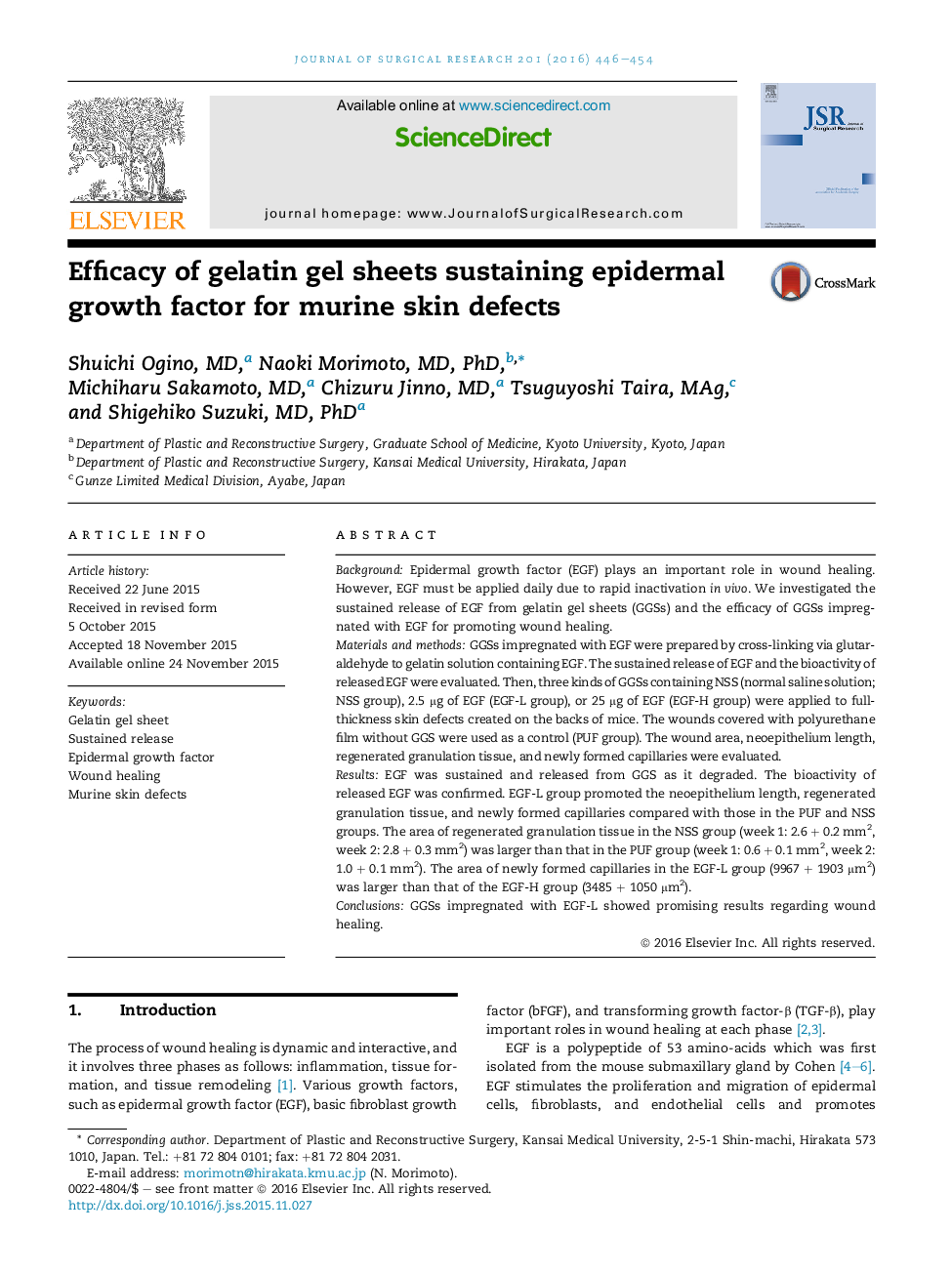| Article ID | Journal | Published Year | Pages | File Type |
|---|---|---|---|---|
| 4299411 | Journal of Surgical Research | 2016 | 9 Pages |
BackgroundEpidermal growth factor (EGF) plays an important role in wound healing. However, EGF must be applied daily due to rapid inactivation in vivo. We investigated the sustained release of EGF from gelatin gel sheets (GGSs) and the efficacy of GGSs impregnated with EGF for promoting wound healing.Materials and methodsGGSs impregnated with EGF were prepared by cross-linking via glutaraldehyde to gelatin solution containing EGF. The sustained release of EGF and the bioactivity of released EGF were evaluated. Then, three kinds of GGSs containing NSS (normal saline solution; NSS group), 2.5 μg of EGF (EGF-L group), or 25 μg of EGF (EGF-H group) were applied to full-thickness skin defects created on the backs of mice. The wounds covered with polyurethane film without GGS were used as a control (PUF group). The wound area, neoepithelium length, regenerated granulation tissue, and newly formed capillaries were evaluated.ResultsEGF was sustained and released from GGS as it degraded. The bioactivity of released EGF was confirmed. EGF-L group promoted the neoepithelium length, regenerated granulation tissue, and newly formed capillaries compared with those in the PUF and NSS groups. The area of regenerated granulation tissue in the NSS group (week 1: 2.6 + 0.2 mm2, week 2: 2.8 + 0.3 mm2) was larger than that in the PUF group (week 1: 0.6 + 0.1 mm2, week 2: 1.0 + 0.1 mm2). The area of newly formed capillaries in the EGF-L group (9967 + 1903 μm2) was larger than that of the EGF-H group (3485 + 1050 μm2).ConclusionsGGSs impregnated with EGF-L showed promising results regarding wound healing.
